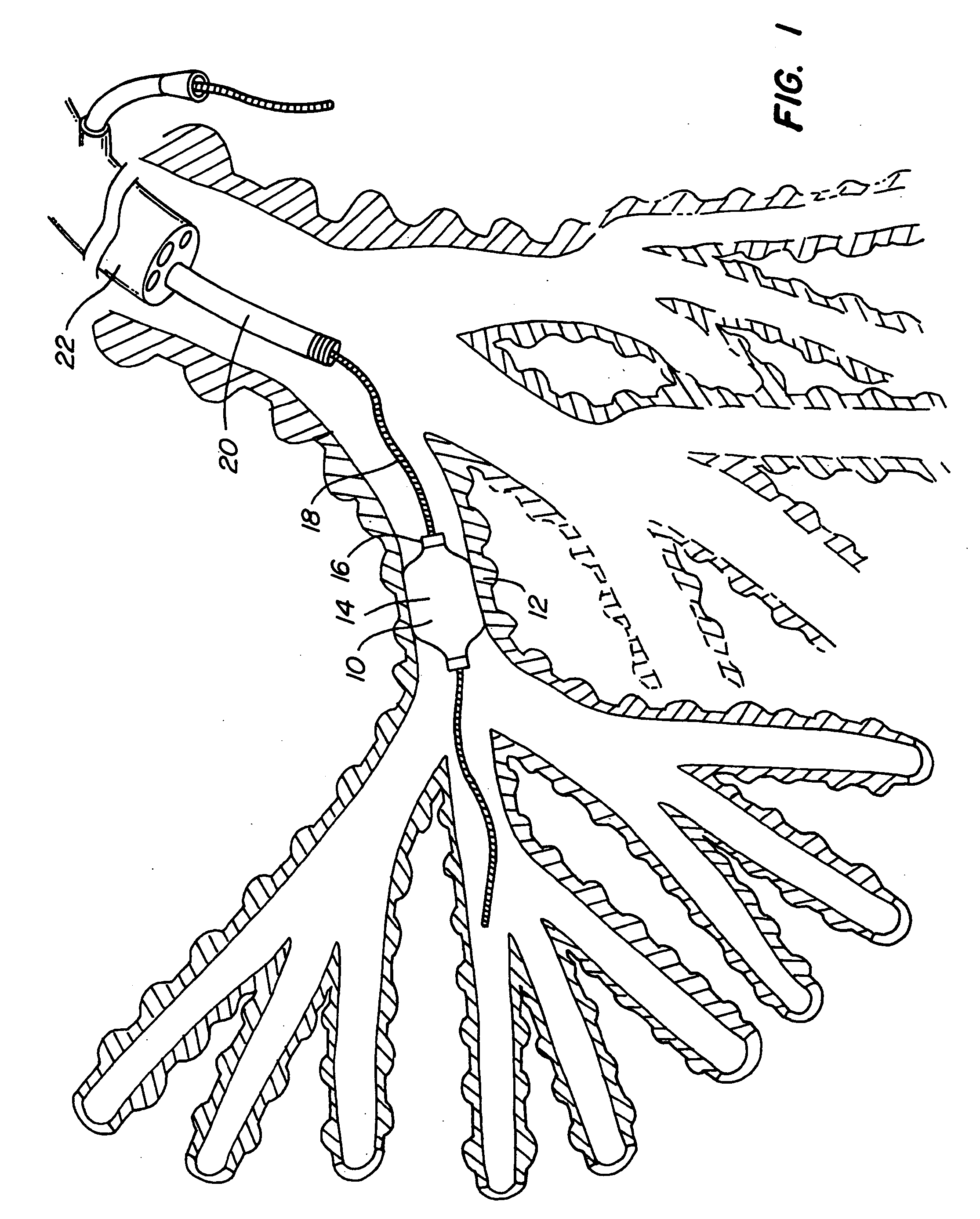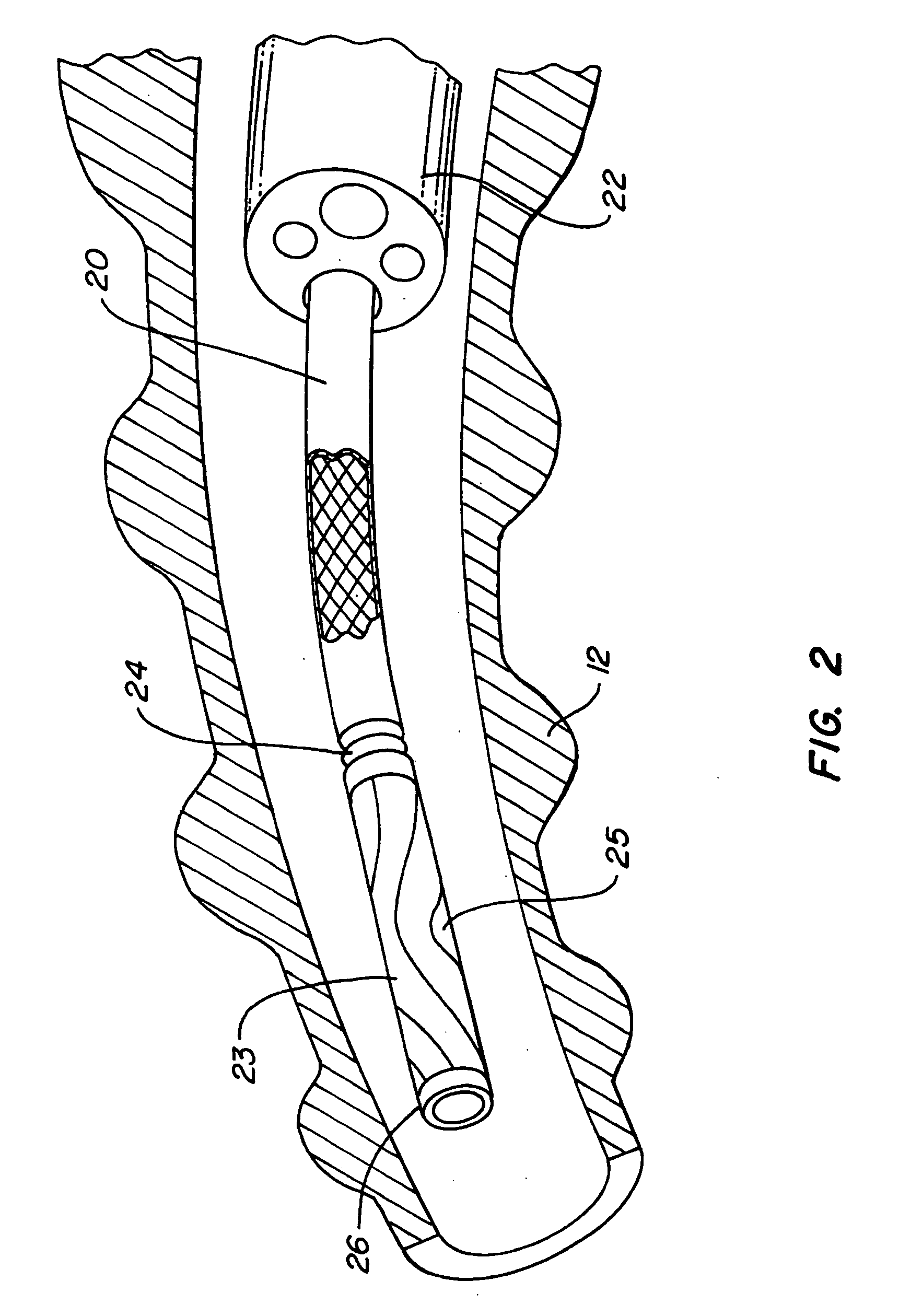Method of treating a lung
a lung and lung technology, applied in the field of lung treatment, can solve the problems of major airway collapse, exacerbated effect, failure to suspend major airway, etc., and achieve the effect of reducing collateral flow, reducing volume, and reducing collateral flow
- Summary
- Abstract
- Description
- Claims
- Application Information
AI Technical Summary
Benefits of technology
Problems solved by technology
Method used
Image
Examples
Embodiment Construction
[0055] The following tools may be used to treat COPD patients in a minimally invasive manner: Imaging and embolic devices to block blood flow through the target lung tissue; devices to help prepare the lung for devices and agents; a side wire delivery system that is advanced alongside the bronchoscope to guide and release several implants without removing the scope; a lung volume reduction implant device (Intra-Bronchial Device or IBD) that is controllably coupled to a delivery catheter that includes a working channel that runs through the center of the catheter and the implant; an inflator catheter that fits down the middle of the IBD and delivery catheter to inflate the IBD; an IBD plug element and delivery system; a deflation device to reposition or remove the IBD; a collateral flow detecting device; collateral flow blocking agents; adhesion promoting agents to maintain atelectasis; and a lung tissue compressing system. These items provide a reliable minimally invasive procedure ...
PUM
 Login to View More
Login to View More Abstract
Description
Claims
Application Information
 Login to View More
Login to View More - R&D
- Intellectual Property
- Life Sciences
- Materials
- Tech Scout
- Unparalleled Data Quality
- Higher Quality Content
- 60% Fewer Hallucinations
Browse by: Latest US Patents, China's latest patents, Technical Efficacy Thesaurus, Application Domain, Technology Topic, Popular Technical Reports.
© 2025 PatSnap. All rights reserved.Legal|Privacy policy|Modern Slavery Act Transparency Statement|Sitemap|About US| Contact US: help@patsnap.com



